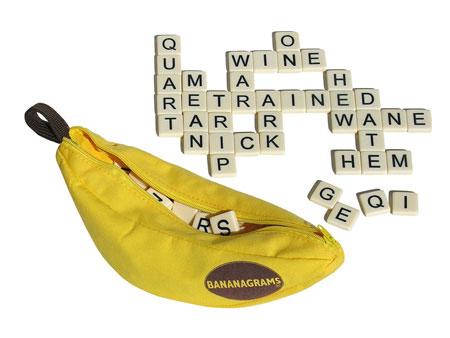
Asymmetry: For Bananagrams, depending on the which tiles they randomly selected, some players may have an easier time making words than others. Perhaps they have more vowels and commonly used consonants, whereas the other player has a lot of uncommon consonants and barely any vowels. In this case, the game is unbalanced and it is easy for the first player to easily make many words and win quickly.
Strategy: There are multiple strategies for making words in Bananagrams. Some players may try to create long words to use as many letter tiles as possible each time, but this does take a lot of extra thinking. Other players use the strategy of creating as many short words as possible, which are by themselves easier think of. In my experience I’ve found that those who create lots of short words are able to go through the tiles faster, and ultimately win the game faster and more easily. They spend less time thinking and trying to figure out word positions and this gives them an advantage.
Objects: The letter tiles are the only objects used in gameplay for Bananagrams. I would say that they all have the same cost (we treat each letter tile the same technically). However, some tiles are worth a lot more, like common vowels or common consonants. As mentioned earlier, having ‘better’ tiles can give certain players an advantage, making the game unbalanced.
Transitivity: I wouldn’t say that Bananagrams has transitive relationships. There is no cost curve, creating long and interesting words does not net you more points than creating short and simple words. Perhaps this could be a cool mechanic to add on to the game though. I also don’t think there is an intransitive relationship going on for this particular game.


